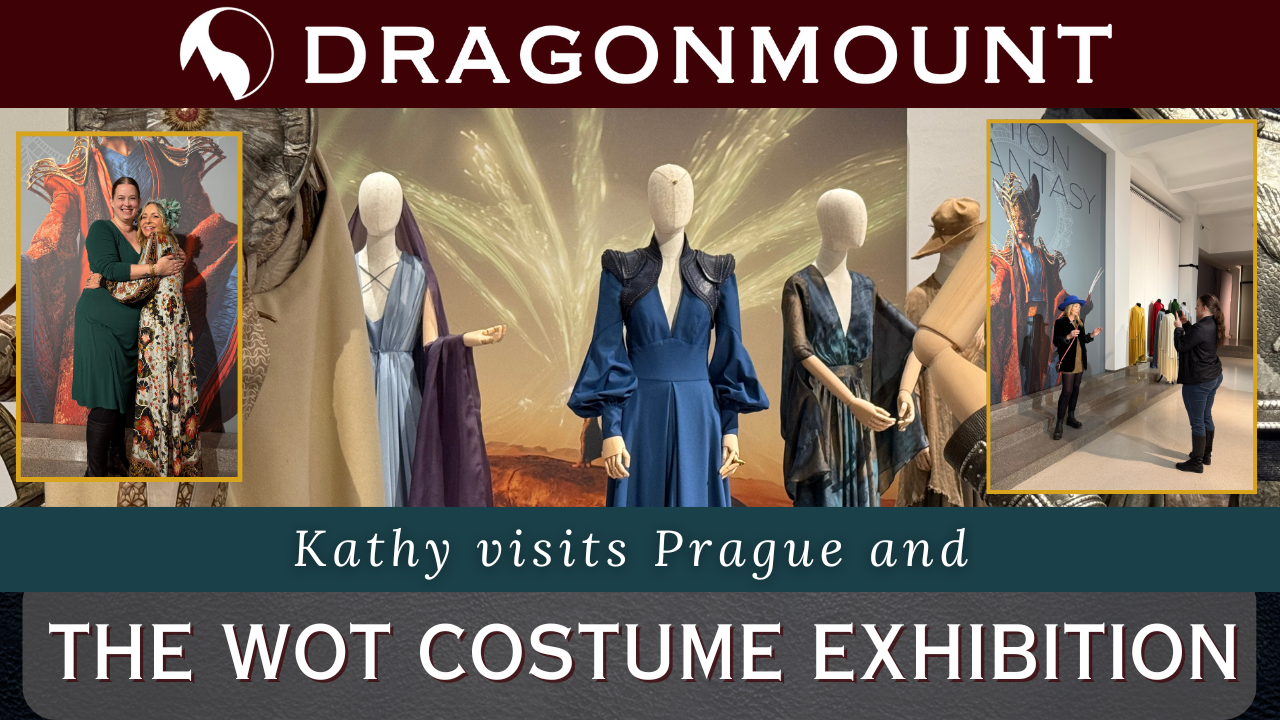News items
The Wheel of Time costume exhibition at Prague's Galerie Manes showcases over 80 breathtaking costumes, offering an unprecedented look at the intricate craftsmanship behind the show.
Read More...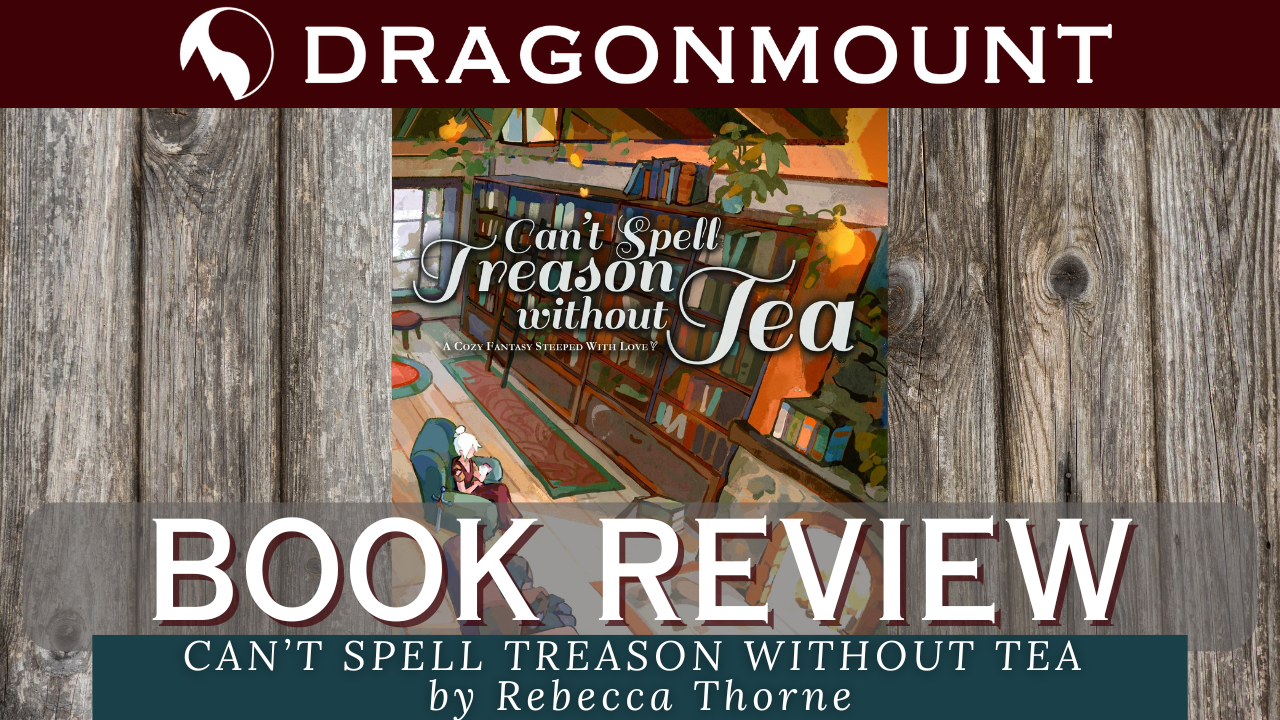
Rebecca Thorne would be the first to admit this book was initially inspired by Travis Baldree’s Legends & Lattes (check out Ola Aleksandra Hills’ review here) . It’s a (mostly) cozy romance in a fantasy setting about two women who open up a shop, grow to be part of the local community, and have pasts that eventually catch up to them. On the surface, that sounds like the same story, but it really isn’t; think of it more as a familiar framework to hang something new on. Reyna is great at her job as a royal guard, but does not particularly enjoy dispatching the increasingly frequent assassins who threaten the throne. It is not, however, a role you can easily leave with your head still attached, as the Queen frequently demonstrates. Kianthe is the Arcandor; the most powerful mage in all the land. She’s a magical troubleshooter, called in to deal with big (and frequently fiery) problems. But there’s a lot of stifling politics around the role, and many layers of ineffectual men trying to tell her what to do. The two have also been secretly dating for years, and have a shared dream of running far away together to open a tea shop that sells books. Or, perhaps, a bookshop that serves tea. An incident at the palace makes their dreams suddenly a lot more real, and they end up incognito as small business owners in a forgotten corner of the world. There is just the small matter of Reyna committing treason against the Queendom, and Kianthe hiding from the Magicary, but I’m sure that won’t come back to bite them later (it will). It’s worth keeping in mind that this is not quite as cozy or small scale as Legends & Lattes is. There is an underlying dragon-shaped mystery about their new town, which leads them into more adventure, and indeed more mortal peril, than you might anticipate. The two of them don’t always make the best decisions, particularly in terms of self-care and self-preservation. But this is an established relationship, and they are both supportive of each other throughout, which is certainly refreshing. “Tomes & Tea” is planned as a four book series, and books two and three are already written. So, it will not be too long until we find out what is next for our couple, and I personally can’t wait. In fact, since the first two books were originally self-published before being picked up by Tor, I don’t actually have to wait; those two are currently available in ebook form. The physical books look very nice however, and I suspect I will pick those up for my shelves as they are released. A fun tale, recognisable in some ways, but still very entertaining. Another sapphic shopkeeping success! Thanks to Tor for the early review copy.
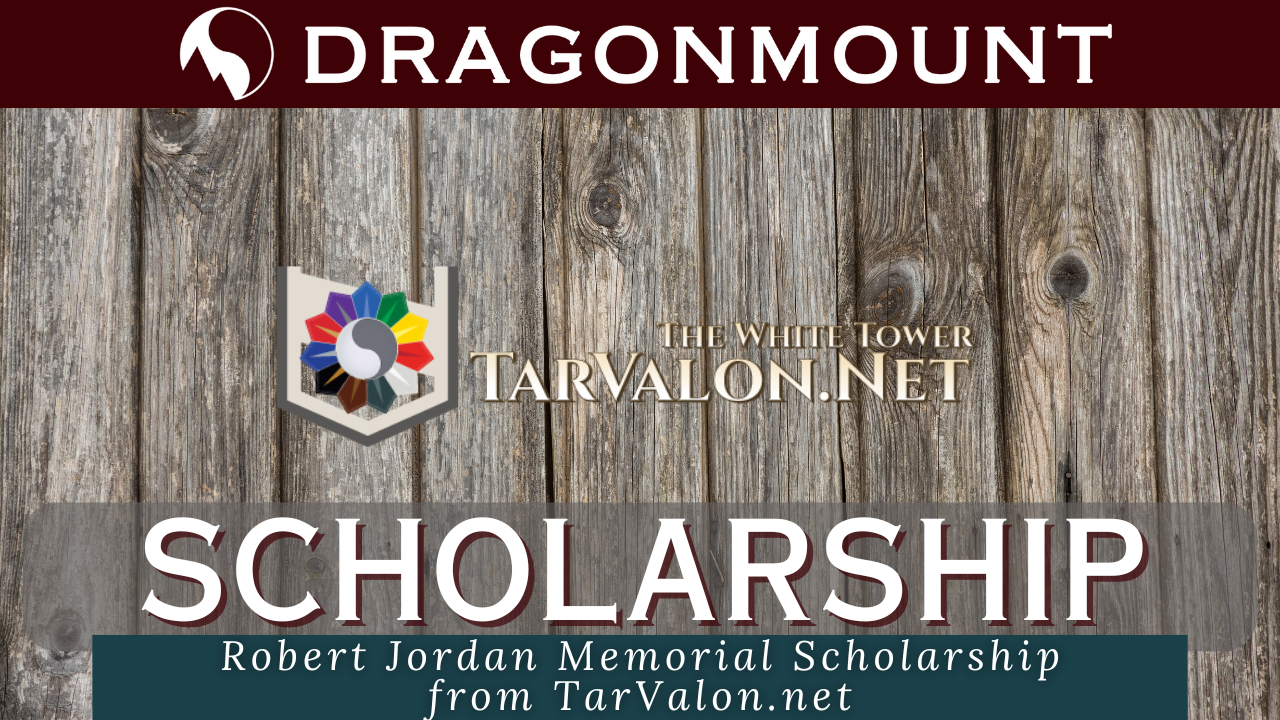
The Robert Jordan Memorial Scholarship is awarded by the community of TarValon.Net to people seeking higher education in pursuit of being a Servant of All. This year, two scholarships will be awarded, of $500 each. People in any accredited program of study are welcome to apply; this includes students in two or four year colleges, graduate studies, or non-traditional certification programs. Apply NOW! because the application period goes until May 15, 2024. Applicants are asked to explain "how do you plan to use your education in a way that exemplifies being a Servant of All?" and scholarships will be awarded based on the response. The Tar Valon Community Council will read the essays and determine scholarship recipients, who will be notified in July. More detail is available on the Tar Valon website. To apply, go HERE.
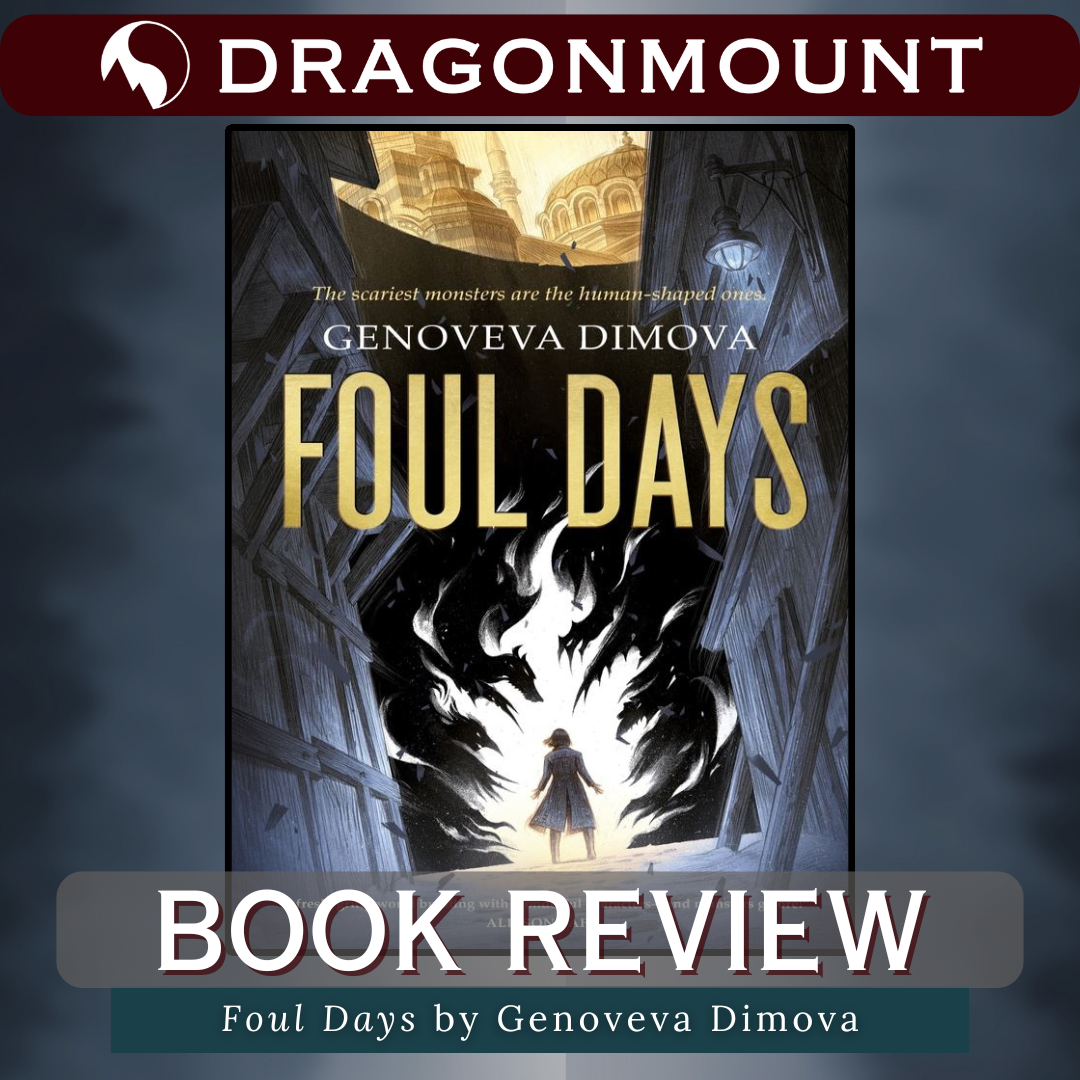
Many modern fantasy books are showcases of worldbuilding—magic systems, creative (and not so creative) variations on the “orc,” tongue-twisting character and place names, and so on. Foul Days by Genoveva Dimova has the best elements of all of that, but it also has what so many of its contemporaries do not: vivid and engaging prose. Take the very first paragraph. It was nearly midnight on New Year’s Eve, but the city inside the Wall didn’t celebrate. The people there knew that the birth of a new year was—like any birth—difficult, painful, and dangerous. You better believe I tore through this 350-page book in a hurry after that. It helped that I read it on vacation, of course, with my only distractions being ordering another drink and the occasional dip in the Pacific. But Foul Days isn’t just a great beach read. It is also a great stay-up-past-your-bedtime read, a great take-on-your-lunch-break read, a great anytime read. The action is fast, the world is vividly bleak, and the suspense kicks in early and doesn’t let up. The main character, Kosara, is a young witch who has packed a surprisingly long troubled past into her short years. Before long, she is forced to give up her shadow—her magic—in order to escape from the Czar of Monsters. It’s a short-term solution, because a witch can’t live for long without her shadow. In Kosara’s quest to get it back, she gets swept up in the machinations of the criminal underworld and crooked cops—including a handsome cop with almost as many secrets as Kosara—and a host of monsters. There is an element of steampunk to the fantasy—trains, guns, and a hot air balloon make appearances—as well as a touch of romance (I did mention a handsome cop…). I picked this book up because the blurb advertises The Witcher meets Naomi Novik, and doesn’t that sound like a good time? There is more Naomi Novik here than Geralt; the Witcher comparison stems mostly from the compendium of monsters and specialized monster fighters. Novik’s influence is much more present, with a flawed-but-strong young heroine and a world grown from eastern-European folklore roots. In the case of Foul Days, those influences come from the author’s origins in Bulgaria. Indeed, the “Foul Days” of the title correspond to the Pagan Slavic winter holiday of Korochun, the time of year when the more malevolent spirits are at their most potent. Those spirits are especially potent in Chenograd, where the story begins. Chenograd and Belograd are two halves of a city divided by a wall—The Wall—which keeps all the monsters and evil spirits on the Chenogradean side. It also (mostly) keeps all the citizens of the cities on their respective sides. As you might imagine, there is some tension between the folks on opposite sides of The Wall. We learn more about the origins of The Wall and how this city got to be divided as the book progresses. Dimova does an exceptionally good job of introducing the lore at a pace that keeps the reader informed without overwhelming. The POV is third person, but there is more than a hint of the unreliable narration from our heroine, Kosara, who has some secrets that she would rather not share with the reader or anyone else. This mostly works well, creating an atmosphere of uncertainty that very much matches the uncertainty that Kosara feels after crossing to the other side of the wall and discovering the betrayal and deception that more than validate her secrecy. There are a few instances, though, where I wish Dimova had trusted her own very capable character development and left things in the subtext. For example, after Kosara meets a character who is revealed to have robbed a bank with a toy gun, we read that “Kosara glanced at Nur with newfound respect. This perhaps showed that something was amiss in Kosara’s own moral compass.” Added to the fact that on the very first page of the book we see Kosara using magic to cheat at cards, I don’t think we need to be told so explicitly in which direction her moral compass points. Overwhelmingly, though, I enjoyed the prose of Foul Days immensely. The world that Dimova creates leaps off the page—sometimes frighteningly so—and, at times, managed to take me from my sunny vacation to the snowy streets of Chernograd and Belograd. I loved discovering and understanding the different monsters, some of which are truly evil and some of which are just your average creatures with their own needs and wants. The book also does an excellent job of illustrating that some of the humans are more monstrous than any creature, and, as the cover of the book says, “the scariest monsters are the human-shaped ones.” Foul Days by Genoveva Dimova comes out in June, and I highly recommend putting it on your summer reading list. The second book, Monstrous Nights, is set to release in October, and I am already excited to see how Dimova continues this adventure. Thank you to TOR for the advance reader copy that I reviewed, and thank you to Grace for editing this review.
📍 Looking for Dragonmount at JordanCon? We're all over the place! Come find us to grab your exclusive badge ribbon and join in on the fun. We're excited to meet you, share stories, and celebrate our love for The Wheel of Time. Check our plans and stop by—let's make this JordanCon unforgettable! Kathy Campbell aka JordanCon’s Officer of Communications You’ll find her- in the wild enjoying herself around the con for most of the weekend! Sunday session- Feedback & Leavetakings Kitty Rallo aka ½ of this year’s Toastmaster duo Opening Ceremonies Project Runway: JordanCon Unlocking Shakespeare with Guy Roberts Author Guest of Honor Spotlight Artist Guest of Honor Spotlight JordanCon’s Annual Costume Contest Ebony Adomanis aka JordanCon’s New Member Services Director You’ll find her- Friday New Member Tours Remainder of the weekend in the wild enjoying herself around the con! Thom DeSimone aka JordanCon Panelist tWoTcast Live! WoTionary: A Wheel of Time Game Show Crystal Fritz aka JordanCon Newbie You’ll find her- in the wild enjoying herself around the con! Kevin Angus aka JordanCon Panelist Looney Theories The Wheel of Time Family Feud with Tar Valon After Dark Erin DeSimone aka JordanCon’s Director of Media Relations You’ll find her- in the wild enjoying herself around the con!
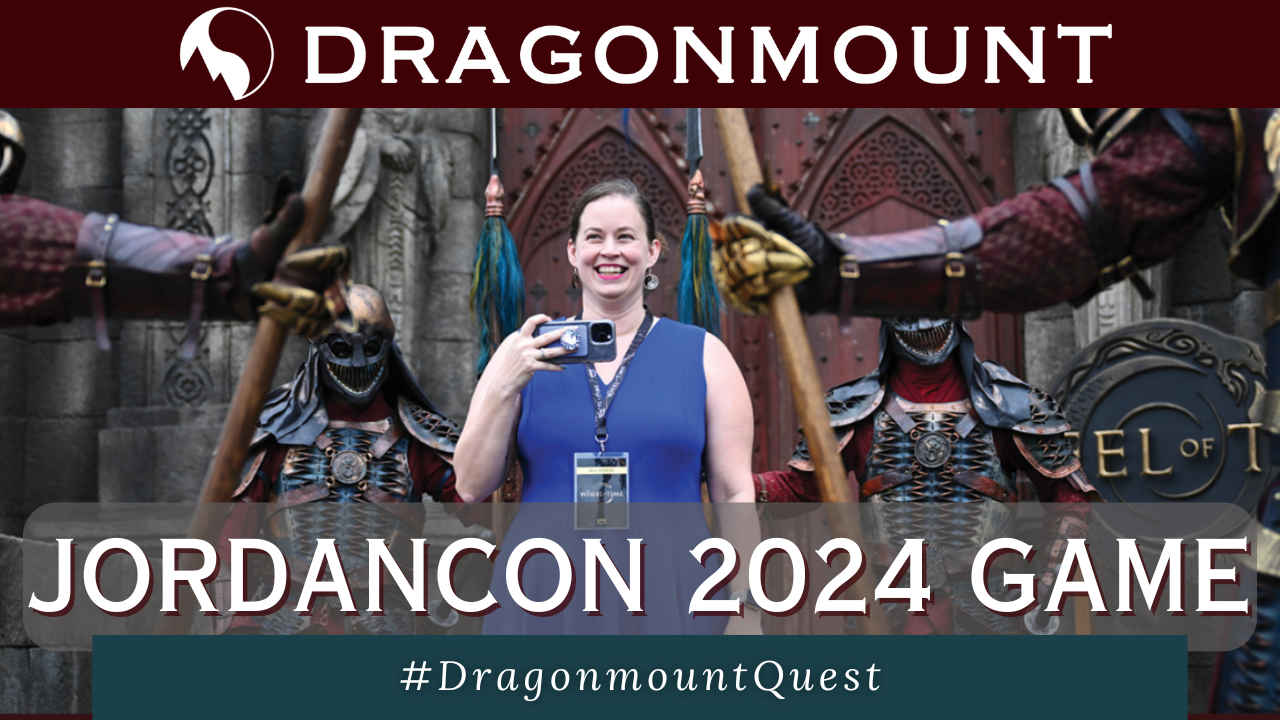
Welcome to the 2024 Dragonmount x JordanCon Quest! Join Dragonmount on a quest to interact with the amazing community at JordanCon, which comes together each year to celebrate The Wheel of Time and other sci-fi/fantasy works. Here's how it's going to work! Complete any quests from the list below by following the instructions and posting the photos to your social media account using the hashtag #DragonmountQuest. Write the number of each completed quest in any box on the BINGO card on the back of your JordanCon program. Get BINGO by placing any 5 completed quest numbers in a row (horizontal, vertical, or diagonal). When you've made a BINGO, search out a member of Dragonmount to confirm and authorize your win. Important note: All photos must be taken with consent. Please do not interrupt or disrupt panels or conversations to take photos. To be eligible to win BINGO all social media posts must be on a public profile using the hashtag #DragonmountQuest (so Dragonmount can authenticate and repost). Selfie with a Dragonmount staffer Screenshot of your Dragonmount.com profile Selfie with someone in Aes Sedai cosplay Screenshot of you following Dragonmount on Twitch with the alert bell Post in the JordanCon 2024 chat on the Dragonmount Discord Photo of someone reading a book at JordanCon Photo of a Dragonmount ribbon on your badge Selfie with an Author Guest and their book Screenshot of your favorite video from Dragonmount's YouTube Channel Photo of your Con Suite meal Photo of a non-Wheel of Time cosplay Screenshot of your favorite blog post on Dragonmount.com Photo at a panel Selfie with a Dealer Repost your favorite Dragonmount TikTok and comment on it that you reposted it Screenshot of you following Dragonmount on Instagram Screenshot of the bookstore on Dragonmount where you can buy ebooks published by Tor Publishing Group Post a video of yourself declaring <something> "From the slopes of Dragonmount!" A photo of the Dragonmount logo somewhere at JordanCon Selfie with a group of nerds Dragonmount dance party! Find our dance party thread on our social media and post a pic/video of you dancing or a dancing gif Photo of a purchase made from the Dealers Hall Selfie with a piece of art you've purchased Screenshot of you following Dragonmount on TikTok Selfie at the JordanCon dance party Selfie at the JordanCon store Photo of your best Wheel of Time inspired pose Photo of anything that isn't directly related to The Wheel of TIme but makes you THINK of The Wheel of Time Screenshot of you following Dragonmount on YouTube with the alert bell Photo of an awesome Charity Auction item The first five people with a straight line BINGO will win one of the following prizes: a signed hardcover Origins of the Wheel of Time OR Books 1-4 of the Stormlight Archive. With book five, Wind and Truth, coming out this December, now is the perfect time to catch up on the series! Anyone else with a completed BINGO will be entered for a chance to win any remaining copies as well as a variety of other amazing prizes from the Tor Publishing Group warehouse. Special thanks to the incredible team over at Tor Publishing Group for sponsoring these amazing prizes. Stay tuned for Brandon Sanderson's Wind and Truth, which releases on December 6th, 2024.

With JordanCon just around the corner, excitement is building, and so is the need to pack smart! Whether you're a first-timer or a seasoned attendee, having the right gear can make all the difference. Here’s a rundown of the top 10 essentials I pack to ensure my adventure is as smooth as a Tinker's dance moves. VEGER Portable Charger: Never let your device die in the middle of capturing a memorable panel or snapping a selfie with your favorite author. This slim power bank is a lifesaver, with built-in cables for both iPhone and Android devices. Veken Packing Cubes: Stay organized and maximize suitcase space with these handy packing cubes. They come in various sizes, making it easy to find exactly what you need without rummaging through your entire bag. Pedialyte Powder Packets: Hydration is key, especially with all the excitement and running around. These packets are a quick fix to keep hydrated, helping you stay energized throughout the con. Riemot Luggage Cup Holder: Juggling coffee and luggage is no joke. Attach this cup holder to your suitcase handle, and keep your drinks secure while you maneuver through crowds. Two drink slots in case you are a drink goblin like me! Earplugs: Whether you're trying to sleep on a noisy flight, in a room near the party floor, or next to a snoring roommate, earplugs are essential for peace and quiet. I bring my Loop earplugs, which I use year-round to drown out the chaos of the office. Neutrogena Makeup Remover Wipes: Refresh your skin after a long day with these individually wrapped wipes. They're perfect for quick makeup changes between events or before bedtime. Unlike travel packs of makeup wipes, these won’t dry out because they are individually wrapped. This is especially handy if you don’t use these frequently. It will keep the rest fresh for when you do need them. BAGSMART Toiletry Bag: This TSA-approved toiletry bag hangs conveniently and fits all your grooming essentials, keeping them neatly organized and accessible. 14 GRIDS Travel Pill Organizer: Keep your medications and supplements neatly sorted and easily accessible, a must-have for managing health on the go. It is so small, it can easily fit in any bag you choose. Electronics Organizer: An absolute necessity to keep all your electronic accessories like cables, power banks, Apple watches, Fitbits, e-readers, and earphones in one place. No more digging through your bag for a lost charger! Tide To Go Stain Remover Pen: From accidental spills to enthusiastic costume mishaps, this pen will be your best friend. It's compact and perfect for immediate spot treatment to keep your outfits looking great. Packing these items will ensure you're prepared for anything JordanCon throws your way, leaving you free to focus on the fun, the books, and the unforgettable community experience. See you there! *Note- contains affiliate links. Clicking through our links won't cost you any extra, but Dragonmount may get a small commission from Amazon. It's win-win for you and us!
Tsalmoth, a Vlad Taltos novel by Steven Brust, begins with a punchy opening line: “Have you ever noticed that getting married is like trying to collect a debt from a dead guy?” Well, have you? I myself have not noticed this, but I also do not have any personal experience doing either thing, so perhaps I am not best qualified to assess the analogy. In any case, I certainly felt compelled to read the next line, and the next, and the next—which is a good thing, because before that, I had been slightly worried to discover that I was starting the sixteenth Vlad Taltos novel, having read none of the previous fifteen! This seems to be a theme with my book reviews—jumping into series and universes at random points and trying to find my footing. I needn’t have worried though, as I was able to understand enough about the world and characters to find it deeply enjoyable as a stand-alone novel. Indeed, after a few pages, I found myself caught up in the story and piecing together enough context to enjoy the ride. Tsalmoth follows the adventures of Vlad Taltos, a sort of mid-level organized crime boss in a fantasy city, as he attempts to plan a wedding and collect a debt from a dead guy. The story is told first-person from Vlad’s perspective, and I quickly found myself enjoying his voice. Although the first few pages had me feeling in over my head with characters and lore, Vlad quickly addresses this by offering “...maybe I should tell you a bit about myself. Nah, skip it. That’s boring. You’ll figure it out.” This snappy and somewhat cocky tone is tempered by Vlad’s curiosity, good-heartedness, humor, and noted simple tastes. Each chapter begins with several ‘out of time’ paragraphs of Vlad describing the wedding planning process. As he sorts through the various traditions and cultural expectations of a wedding, I was reminded of a The Sopranos meme of actor Michael Imperioli as the hapless Christopher Moltisanti pinching a cigarette between his fingers and earnestly explaining his understanding of a concept. Go ahead and insert “So get this, Tony…” before any of Vlad’s expositions and you’ll see what I mean. Brust, as Vlad Taltos, does include some absolutely effective descriptions that can’t help but resonate with the reader. For example, recounting a conversation with his betrothed, Cawti: We talked about moving stuff around. How can a discussion of moving a table from one side of a room to the other make you so happy? I don’t know. It did. Those few, simple words about the pure contented feeling of planning with another person that you trust and want to spend time doing nothing with do more to capture the feeling of love than a lot of flowery prose that I have encountered. Vlad’s adventures begin, as alluded to, with the death of a guy who owes him money. In his efforts to find who is responsible, and who might be able to make good on the debt, Vlad is drawn into a world of intrigue. In classic mob story fashion, the plot thickens—and thickens again, as more players are revealed, and factions emerge. Each time it seems that he is closing in on the money, a new angle develops, until the very end when everything is tied up in surprising and satisfying fashion. One element that I found to be missing, although I stayed on my toes expecting it for the whole read, is a devastating betrayal. In fact, most of the characters, aside from Vlad, are fairly one dimensional (in the character sense, not necessarily in the planar existence sense). This could be an intentional choice of the author to depict an unreliable and self-interested narrator, so I mention it more as an observation than a criticism. There is sorcery and necromancy and demonology in the world of Vlad Taltos, as well as a collection of races and classes that I struggled to keep track of. I attribute my struggles more to the fact that I started in the middle of the series than as a shortcoming on the writing. If anything, I am now motivated to read more of Brust’s books so that I can begin to understand more of this world. Overall, Tsalmoth is an entertaining mob mystery set in a fantasy world. The quick pacing and snappy dialogue helped smooth over any of my confusion about the world of Vlad Taltos. Even if I didn't know exactly what was happening in the universe, I always knew what was happening in the moment. Steven Brust has firmly been added to the list of authors whose works I will always check for at libraries and booksellers.

The Wheel of Time flows through my veins as much as it does yours! That being said, there is a TON of wide-ranging crossover in many fandoms with us WoT nerds. Whether it's Star Trek, Star Wars, Marvel, DC Comics, or even cooking (love them honeycakes)! But another franchise that is near and dear to my heart is Avatar: The Last Airbender. The themes and many story elements deeply cross over into Wheel of Time.I will be exploring all of this in this blog series as I watch the live-action series. You can also catch some AtLAB content by tuning in to the current season of our Monday Night #reWoTch where we are watching the Animated series of AtLAB Book 2. Don't forget to join us Mondays at 9pm Eastern on the Youtubes ;-) Welcome to the Fire Nation capital, a place where beauty is shadowed with ominous foreboding. As the curtain rises on the live-action adaptation of Avatar: The Last Airbender, we are treated to a visual feast. The set design? Stunning. The costumes and makeup? On point. The opening sequence? Kyoshi, you absolute legend! She graces the screen looking fiercer than ever. The visualization of the avatars, lined up like a council of gods, with Roku's entrance at the end? Perfection. And we can’t forget the delightful addition of rat-chickens, which immediately shows the quirky touch that runs through the world of Avatar. But it's not just the aesthetics that I thoroughly enjoyed. The bending, oh the bending! Earth and fire collide in a spectacular display of power. The earthbender's use of stones to create a Gatling gun? Pure genius. And those rat-chickens? They steal the show with their hilarious antics. As the action unfolds, we witness the earthbender seamlessly blending defense and attack, surfing on rocks like a boss. And those 'chocobos' lurking in the background? A nod to gaming, perhaps, with Square Enix vibes that make you do a double-take. And then there's Firelord Sozen and crew, delivering performances that harken back to classic Kung Fu films. It's a nostalgic nod that many fans probably appreciate. I certainly did! But let's talk about the fire. The burning effects are chillingly realistic, a stark reminder of the showrunners' aim to appeal to “Game of Thrones" fans. The violence and gore is in service of a darker, grittier narrative. Side Note: I want to dive into a theory I have been seeing people passionately discuss. Is the Avatar truly one soul? I'm not entirely convinced. The Avatar communicates with past/dead Avatars, suggesting a shared consciousness rather than a simple cycle of rebirth. It's a thought-provoking concept that adds depth to the story. And then there's Aang, soaring through the skies without his trusty staff. A bold choice, considering its significance later on. Why the change? It's a departure from the original, but perhaps it sets the stage for new developments. Speaking of developments, the announcement of Aang as the Avatar and subsequent event at the Southern Air Temple adds a layer of tension. It makes the Fire Nation's decimation of the airbenders more plausible, concentrating some of the strongest/most influential airbenders in one vulnerable location. And can we talk about the air temples? Majestic doesn't even begin to describe them. Now, let's address the elephant-bison in the room: accents. Or rather, the lack thereof. Aang sounds... off. Like a robot trying to blend in with humans. It's a curious choice that has me scratching my head.He almost sounds like someone narrating Aang’s story/thoughts instead of a character living in the world. But enough about Aang, let's talk about everyone's favorite sky bison, Appa. He looks and sounds as magnificent as ever, a CGI masterpiece that brings joy to this diehard fans' heart. Aang emerges from his icy slumber and leaves behind his beloved Appa, a choice I’m not thrilled about him just HAVING the Air bison whistle already. Because I fear its the Netflix is giving us a subtle hint that certain filler episodes may be left out, but also a lesson in responsibility and sacrifice for the viewers >.<. And then there's the budding bond between Aang and Katara, a sweet moment that feels a tad forced but still manages to warm our hearts 😉 The showdown between Zuko and Sokka is a highlight, showcasing Sokka's clever tactics and Zuko's simmering frustration. Aang's intervention, effortlessly taking out firebenders, is a testament to his raw power. But it's Zuko's disappointment upon meeting Aang that strikes a chord. The gap between expectation and reality is palpable, setting the stage for a complex relationship. They've really got Zuko's obsession (or admiration?) of the Avatar down pat. It's like he worships the Avatar. I’ve always seen it like a kid idolizing a pro wrestler. The way he rambles on about past Avatars and their abilities, creating a collection of pictures and even little Avatar dolls, predicting what this new one will be like. It's all there, and was something wasn’t fleshed out until much later in the animated series. Now, let's address the Avatar state. His reaction to finding Monk Gyatso feels a bit underwhelming compared to the animated series, missing how it lands with an emotional gut punch. In the cartoon, Katara's role in helping Aang come out of the state was a pivotal moment that seems to be missing here. In summary, this live-action adaptation scores a solid 4 out of 10 from me. The visuals? A strong 7 to 10. The story? A middling 5. The bending, though? Top-notch, with the airbending presenting a unique challenge in a live action medium versus an animated one that the team tackles admirably. In the end, Avatar: The live-action show is a mixed bag of nostalgia, stunning visuals, and a few missed opportunities. But hey, it's a... ride.. that's just getting started. Here's hoping they continue to surprise us and capture more of the magic of the original series. So grab your gliders, wrangle your rat-chickens, and get ready for an adventure unlike any other (lets hope >.<). The elements are calling, is Avatar ready to answer? Air Benders in General Great Costuming - overall feel of the Air temples and the atmosphere was wonderful. Though it felt like they were all far too serious. The whole theme of the Airbenders is that they are ephemeral, flighty. They don't hold strongly to anything because all life is fleeting and all are one. Fire Nation / Benders I think they are doing well showing the Imperial nature of the Fire Nation at this point in their history. The bending itself does look good and “dance” like. I hope that theme carries through. Southern Water Tribe Totally get “Reservation Dogs” feel with how they acted together. I also like the feel from the Indigenous people in the most recent season of True Detective. I am glad they hired indigenous actors. Aang Trying to be as nice as possible and honestly hoping that this kid just received very poor direction but he has almost no personality IMO, he just seems SO FAKE and wooden. Aang’s happy go lucky/childlike nature is basically non-existent. He seems more like a narrator telling the viewer about Aang and what he is doing and less a living character. Gyatso Monk Gyatso was one of my favorite characters in the animated series, this one is… ok. I liked his look and his voice. I think they needed to make him more ‘fatherly’ toward Aang. It was so impactful seeing the flashback scenes and how he took care of Aang in the animated series, that made his death so gut wrenching.. Kitara Another one I am unsure on. I want to see more dialogue and scenes with Kitara. I like her look, the costuming is great. Sokka Overall I like his personality and acting, it took me a minute but I am hoping that he is still in his “protective defense” stage of his personality and that he will mellow out. Zuko Changing his drive from “regaining honor” to “his destiny to be fire lord” was a terrible mistake IMO. At the heart of regaining his “honor” was really “seeking his fathers approval” and it wasn't until he realized (Iroh showed him) that he would never get that because his father was a failure as a father/leader/person. Only then did he realize that it was up to himself to grant his “honor” back. Iroh He's ….good. That's the best I can say. I love Paul Sun-Hyung Lee a ton! But I can’t get past seeing the actor instead of the character.The character of Iroh should be bigger than life, while still humble, funny, charismatic, a deep sadness. This isn’t capturing that for me. I am hoping when he will get a chance to flex his acting muscles as the show progresses.
I should begin by explaining something of my own relationship to the author’s works. Like many, I first encountered Brandon Sanderson when it was announced that he had been asked to complete The Wheel of Time series after the untimely passing of Robert Jordan. There are several camps of opinion on how he managed this monumental task, and I fall firmly in the camp of being glad that the plot was wrapped up in an overall satisfying manner, while being somewhat disappointed by the change in the tone of writing and the presentation of some of the characters. Sanderson himself has been open about the challenge of meeting the expectations of Wheel of Time fans and how he found some characters—Mat especially—more difficult to capture than others. It was that exact issue that soured me on his writing for a time, as Mat is a favorite character of mine, and I found myself increasingly disheartened by what felt like a cartoonish representation of Mat’s thoughts and actions. On the other hand, Sanderson did a very nice job of advancing Rand’s arc into darkness (and eventually back out again) that had somewhat plateaued in Jordan’s final books. When I reread The Wheel of Time, which tends to happen every three years or so, I am prepared for the change in writing style and am increasingly able to enjoy the final three books of my favorite series. However, I have struggled to get into Sanderson’s other works, finding within them the same style of writing and characterizations that put me off his Wheel of Time books. So when I opened Tress of the Emerald Sea, I was mentally prepared to not enjoy it. I am delighted to say that Brandon Sanderson proved me wrong! And he did so with the exact elements that I had come to dislike about his writing. I read Tress of the Emerald Sea in three days over my winter holiday break. It was the perfect book for this time of year—cozy and fun and easy to put down as various social obligations arose and then pick right back up again after they were met. Brandon Sanderson says that the book was inspired by The Princess Bride, and this is apparent. The wit, fun, and magic—not the magic system or its wielders, but the magic of simply reading—reminded me of both the movie and the book by William Golding. The word “romp” is overused in describing books and movies, but I am going to go ahead and say that Tress of the Emerald Sea is a delightful sea-faring romp, complete with all of the elements of a classic adventure: pirates, mutiny, a friendly cook, a talking rat… you get the idea. The book is well structured, with a clear and concise plot, believable character interactions, and strong character development. Tress is especially compelling, growing into her own as she leaves her small island home and ventures into an increasingly bigger world. The villains are somewhat comical (the evil sorceress sometimes plays Solitaire on her laptop, er, “magical seeing board”), but it does not detract from the stakes of the story. In fact, the real danger in the book comes from the environment. In a twist that is both very Sanderson and a touch sci-fi, the seas that cover much of Tress’s world are not water but spores that drift down from the orbiting moons. These spores are highly reactive to water in ways that are dangerous and often deadly. The worldbuilding—always a strong suit for Sanderson—is executed perfectly, with details given to the reader gradually but steadily so that our understanding of the world is always exactly where it needs to be. The narrator is a familiar figure to those acquainted with Sanderson’s cosmere, and is eventually introduced to be a character in this book as well. This allows the fourth wall to be more of an open window, with thoughts frequently directed at the reader. Some of these are useful exposition, some are comical asides, and some are absolutely nonsensical ramblings. There is a reason for that though, as you’ll see. The combination of relatively low stakes and a narrator with a known penchant for zaniness is what allows me to put aside my usual preference for grimdark fantasy and really enjoy Sanderson’s writing in this book. For example, all of the nameless sailors on the ship are simply generalized as “Doug” or “the Dougs.” Descriptions often employ similes, mostly to positive effect. A character described as having a “neck kind of merged with his chin—to the point that after meeting him, you’d inexplicably get a hankering for a baguette” made me laugh out loud. On the other hand, sometimes these comical descriptions detract from moments of gravity. That particular character is being described right after he dies, one of the few actually depicted deaths in the book. Other times—as when the ship tilts and we are told that it is “as if we are seeing through the lens of a student who had just discovered experimental film”— I am reminded of the note left by a professor on one of my college assignments: “Is this really the best way to describe this?” Maybe not. Overall, this book was a joy to read. The physical copy is beautiful, with an outside cover and endpapers that fit the spirit of the book perfectly (and that you will appreciate even more as you consider them again after finishing the book). Sanderson’s acknowledgements and postscript notes make clear the absolute pleasure that the book was to create. For an author who has been so prolific over the past decade—in fantasy, no less, a genre whose authors have a notorious tendency to be less prolific than we would like—Tress of the Emerald Sea is a welcome addition to an already impressive catalog. In fact, it just may have motivated the Sanderson skeptic in me to take another look at the cosmere.
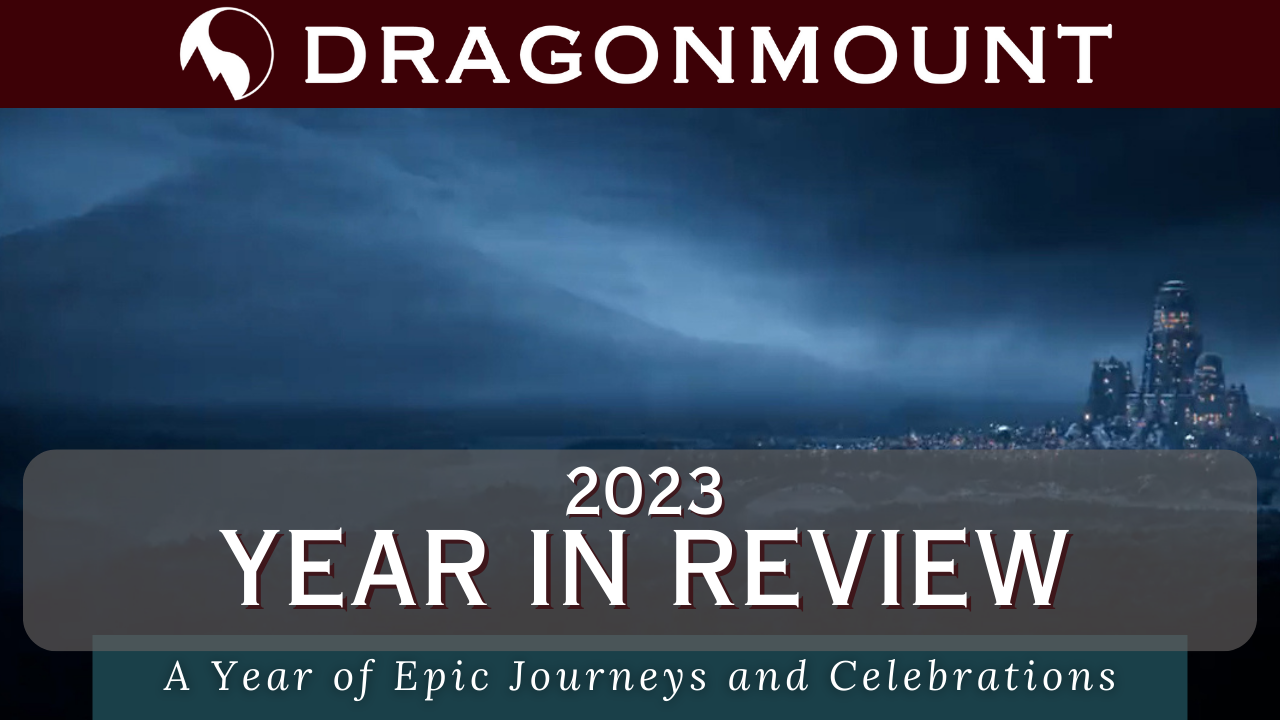
Dragonmount's 2023: A Year of Epic Journeys and Celebrations As the new year dawns, it's time to reflect on the fun times we had at Dragonmount in 2023. From landmark anniversaries to exclusive interviews, 2023 has been a year of unforgettable moments. Celebrations & Events 25 Years of Dragonmount This year marked the silver jubilee of Dragonmount, and the end of an era as founder Jason Denzel passed the torch to our new CEO Kathy Campbell! 10 Years of A Memory of Light The year also marked a decade since the release of A Memory of Light. We celebrated this milestone with joy and nostalgia, honoring Robert Jordan's enduring legacy. Twitch Affiliate You all helped us reach Affiliate status with Twitch, which gives us access to more tools to bring even more content to you. Welcoming the New Social Media Team Dragonmount's online presence was invigorated with the addition of our fabulous new social media team, bringing fresh energy and creativity. JordanCon 2023 At the 15th annual JordanCon, we hosted the Feuding Families gameshow, a highlight that brought our community together for fun and camaraderie. Industry News Navigating Through Strikes This year, the Entertainment Industry experienced strikes with the Writers & Screen Actors Guilds. Though it dampened the launch of Season 2, we were happy to stand in solidarity with the writers and actors fighting for fair deals. Rosamund Pike's Triumph at the Audies Rosamund Pike, the voice that brought The Eye of the World to life, won the 2023 Audie Award for Best Female Narrator. Her captivating narration has been an integral part of our experience and we’re so excited to have The Great Hunt and The Shadow Rising in her voice as well. Year of Sanderson ICYMI Brandon Sanderson blew Kickstarter out of the water in 2022 with his "Year of Sanderson" campaign. It promised monthly boxes of pure awesome and I have to say, we got so much joy from opening our Kickstarter boxes each month. They were filled with goodies and of course, books! Unfortunately, the end of 2023 also means saying goodbye to the Year of Sanderson- but not without one last special surprise from Brandon! He has released a free ebook download of a previously unpublished short story called "Long Chills and Case Dough." Adventures & Exclusives Prague Set Visit CEO Kathy Campbell's visit to the Prague sets offered us an insider's view of the show's production, bringing us closer to the magic behind the camera. An incredible experience to BE in Two Rivers! Stay tuned for some releases from the trip! Connecting with the Cast Our interviews with Daniel Henney, Madeleine Madden, Marcus Rutherford, Ceara Coveney, Dónal Finn, Kate Fleetwood, and Ayoola Smart provided unique insights and allowed for a fun connection with some of our favorite actors. Artist Spotlight: Marcio Abreu We also had the pleasure of interviewing Marcio Abreu, the talented artist behind the graphic novel of The Great Hunt. Epic Community Engagement Charity Livestream During our summertime charity livestream event, we re-watched all of Season One in an epic marathon #reWoTch where we had contests, gave our prizes and were joined by many WoT content creators as well as Harriet McDougal and Maria Simons. Thanks to your support, we hit our goal of $2000 for the American Red Cross to aid those affected by the Maui Wildfires. Monday Night #reWoTch We love hanging out with you all on Monday nights, watching TV together. #reWoTch this year included Season 1 and 2 of The Wheel of Time (of course) as well as The Last of Us, Rings of Power, Good Omens, and Season One of The Mandalorian. Join us Monday nights at 9pm Eastern for more #reWoTch goodness! Gaming with Thom Thom DeSimone took us on livestream adventures via games like Baldur's Gate and the fan-made Third Age Wheel of Time Board Game. TikToking with Kitty #WoTober was a blast with Kitty, who brought incredible characters to life on TikTok. The Wheel of Time Season 2 We delved into the second season of The Wheel of Time on Prime, engaging in thorough discussions and analyses of every episode via our livestreams and podcasts. We're WoT fans - it's what we live for! WoTaHoliday We ended the year by participating in another successful WoTaHoliday hosted by Malkier Talks, and raising more money for charity. If you missed out on any of the fun we had, read through our blog posts for recaps and look through our YouTube videos to re-live the fun. As we bid farewell to 2023, we thank each and every one of you for being part of our journey. Dovie'andi se tovya sagain! Here's to more adventures and shared stories in 2024!
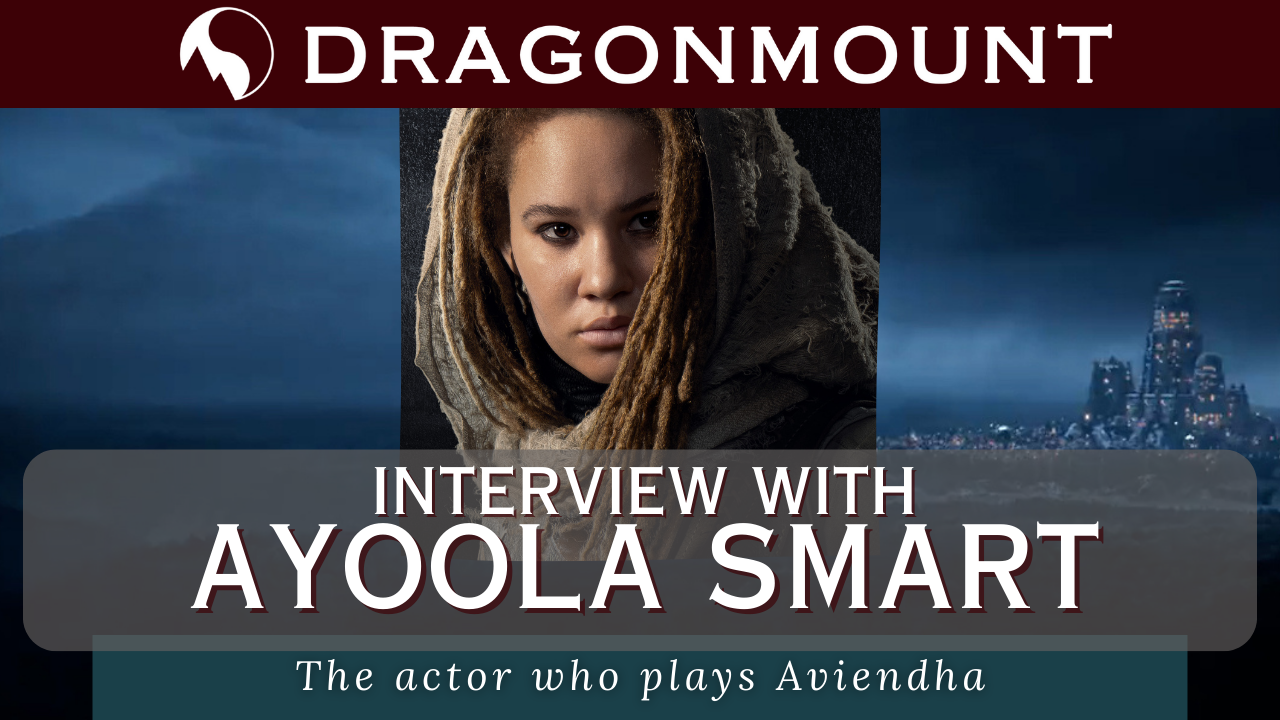
When Amazon asks if you want to talk to four cast members from The Wheel of Time on Prime Video, you drop everything and reschedule your day to make ten minutes for each one available. Now that the SAG-AFTRA strike has ended, the media is finally able to communicate with the cast, and it’s been so wonderful. I know how excited the actors have all been to talk with the fans as well! We were lucky enough to gather together questions to ask Ayoola Smart (Aviendha), Kate Fleetwood (Liandrin Guirale), Marcus Rutherford ( Perrin Aybara), and Dónal Finn (Mat Cauthon). These interviews will make you want to rewatch all the episodes of Season One and Season Two of The Wheel of Time on Prime Video…I know they did for me. Ayoola was an absolute delight and so wonderful to talk to. Here is a snippet of our interview with her. Dragonmount: It’s been pretty universally renowned that we are all in love with your portrayal of Aviendha. I know that our community specifically would love to know how you discovered The Wheel of Time and were exposed to Aviendha. Ayoola Smart: Kind of twofold, I didn't know a lot about like her specifically before the audition process happened. But both of my older sisters are huge fans of the books, so I had grown up with The Wheel of Time in my house kind of my whole life pretty much—the world of it and kind of the ideas around it. And she [Aviendha] is both of my sisters’ favorite female character in the books. So that was really exciting and I was able to immediately call them and be like I need information! Like now! And through the kind of audition process I think when I, when the first sides came through she was labeled as like Annabelle and the kind of character description was like ‘a highly skilled warrior with a dry sense of humor. And you need to feel like she could kill you with her bare hands.’ And that was immediately something. I was like yeah I want, I want to do that. That sounds great. Her journey in the books in season two, it's really the starting point of such a huge journey that she'll go on over time. So it was really exciting to be able to play a character that starts from such a strong place and starts with such a strong kind of history, characteristics, and skill sets. DM: Along with Ragga Ragnars (Bain) and Maja Simonsen (Chiad), you are what we call the ‘ABC Maidens.’ You already have such strong on-screen chemistry. What was it like on set with them? Do you guys use Maiden hand talk to have private conversations? AS: Yes, we definitely did. Over filming we we got to a really nice fluid point with that where we could have these kind of silly little giggly chats about things also because, you know, as we continue, our vocabulary is expanding as more words get put in. So with what we had as it grew, particularly when we would get a new word, and we'd be like, we can do this now, and we’ve had a lot of fun with that. We spend a lot of time together outside of shooting and luckily we all did just click really well, which was nice. And so the kind of, kind of playfulness between us was very natural and it was just there and we spent a lot of time together which has helped. DM: What inspired that absolutely amazing laugh in the campfire with Marcus? AS: A combination of things, I think like, it’s the writers and it is Naomi, my dialect coach, and I kind of spoke about that, it is that humor that the Aiel have that's kind of, can catch you off guard and isn't necessarily funny to everyone but they find it amusing… just where that hits I think and just kind of the situations and we're able to play with that and bring that in. Also, Aviendha is kind of a little bit more cheeky than some of the other Aiel that we will encounter and kind of her humor is very much part of who she is. Just kind of playing around with that, and it just, it just came out and felt right. ----- For the full transcripts with the full conversation for this and the other interviews, sign up on our Patreon!
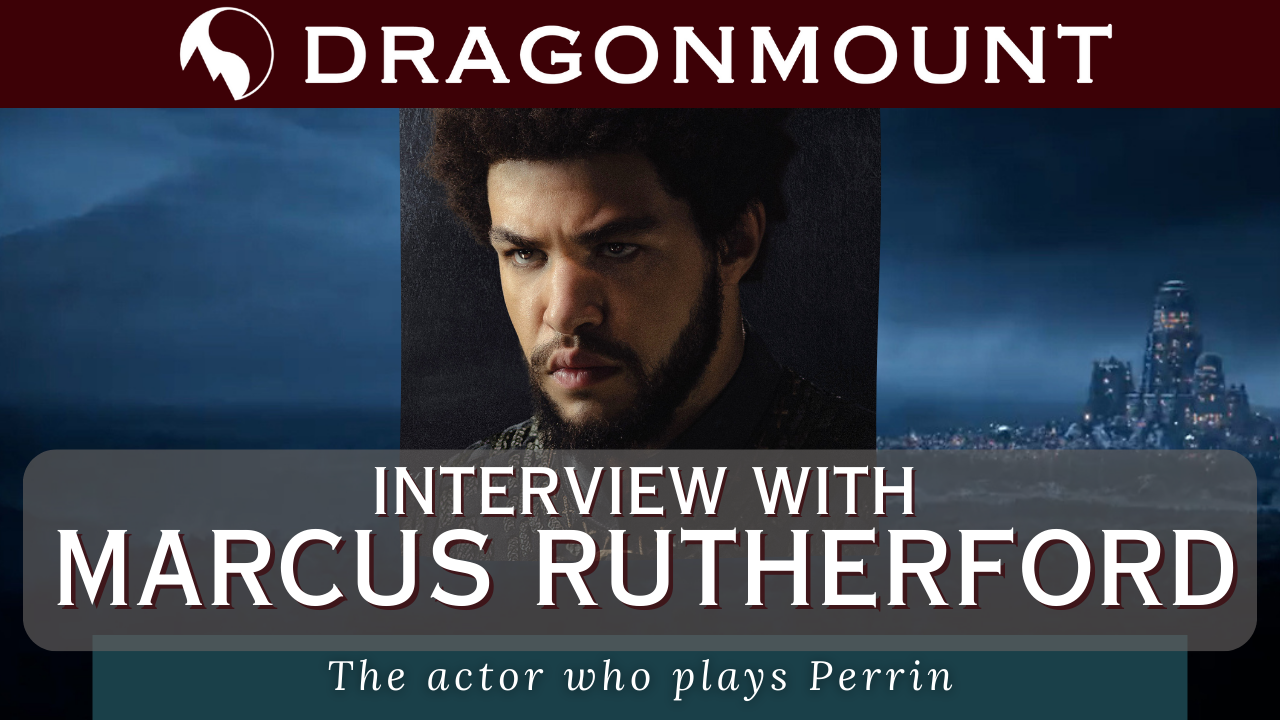
When Amazon asks if you want to talk to four cast members from The Wheel of Time on Prime Video, you drop everything and reschedule your day to make ten minutes for each one available. Now that the SAG-AFTRA strike has ended, the media is finally able to communicate with the cast, and it’s been so wonderful. I know how excited the actors have all been to talk with the fans as well! We were lucky enough to gather together questions to ask Ayoola Smart (Aviendha), Kate Fleetwood (Liandrin Guirale), Marcus Rutherford ( Perrin Aybara), and Dónal Finn (Mat Cauthon). These interviews will make you want to rewatch all the episodes of Season One and Season Two of The Wheel of Time on Prime Video…I know they did for me. Marcus Rutherford has such a soothing presence and was wonderful to take some time to talk to us! Here is a snippet of our interview with him. Dragonmount: You have had the opportunity to befriend some of the bestest boys and goodest girls, specifically the Best Supporting Actress Nom of our hearts, Ka Lupinka. How have those friendships strengthened and grown during S2 and do you have any stories about them that you can share? Marcus Rutherford: Yeah. It was amazing, man. I had a very kind of brief encounter in Season One, but I didn't really get to kind of work with the animals. And then Season Two… You kind of forget this is a real animal, man. It's like a real animal, look, it wants to do its own things. It's kind of like when you work with your horse and stuff, you can’t cheat it. The animal needs to want to kind of stay near you and work with you and listen to you and all those kind of things. It was insane. I think with that Czech wolf dog, they are sort of like a half breed, so it's not particularly easy to get them to like, you know, there was one scene for me that was really important. Where the makeup and effects built like this sort of “deer carcass,” that the wolves are kind of like eating and they (production) kind of just needed Hopper to stay next to me. It wasn't like on a lead or anything. She just had to sit there. And when you see all, these are the dogs eating, their natural instincts you think would be to follow. It was kind of like a scene that I could tell everyone was like (thinking), this is going to go wrong. We just put a load of meat in front of a dog, and its friends were eating… and yeah, it just stayed there instead for the whole scene. It was a really beautiful scene with Elyas and it was just one of those moments that was just so sweet, and I kind of needed the connection there, and you don't really want to have to think about, “Is the dog wandering off or is it not calling for the owner off camera or whatever?” And she just stayed there and she just looked at me at the little moment as a little look where he says, like his mate died too, and all this kind of stuff. And I think there were a lot of moments with that dog where I was just like, “You've made this really easy for me,” which is just like, really special, really special. It could have been, you know, it could've been really tricky. And she, um, she really trusted me. And I think, I think the owner, an animal handler named Maria was amazing. She (Maria) was just like, she (Ka Lupinka) doesn't really connect with people that easy. And it was special. And I think, you know, I think Rafe was kind of torn between like sort of big sort of visual effects kind of animals or like, you know, real animals. And of course you can get a bigger scale with some of those kind of things. But I think for an actual human connection, you just can't like you can with a real animal. I've had so many messages with people talking about their own animals. And I just, I just, I think that's the connection that it needed for, for the show. It needed to be a real bond, a real creature, a real thing in camera that people could connect with and understand with their own dogs when they sort of look at them after the episodes. DM: Season Two's journey for Perrin has ultimately been the battle between the Way of the Leaf and his desire to protect others. How did you prepare for a role that relied on so much internal struggle in such a visual medium? MR: Yeah, it's tricky because in the books you have these POVs that can get, especially for a character like Perrin, you get so in-depth with what he's thinking and everything, and then to translate that into a show with just 8 episodes…. is hard, man. It's really hard. And I think what was good about Season Two is he kind of gets thrown into a lot of positions that are quite challenging for him. You see it with… when he's with the Sheinarans or he's with Aviendha he's kind of like… There are kind of those lovely conversations that he's had with Ila and the Tuatha’an in Season One. You can kind of see that still surfacing. But it's becoming apparent he can't avoid violence at war, and it's kind of surrounding him and something that might be within him as well. But this idea that you can kind of just like turn away from it is becoming quite a difficult road to take. So I think with the introduction of the Seanchan and that kind of very, you know, horrible, horrific kind of culture in a way, in the terms of how they use violence and stuff. I think what was lovely about Season Two is that, for a character that isn't really saying everything that's going on his mind, you can kind of see him going through it. Being put in these situations that are hard for him and traumatic. That dichotomy between violence and being a pacifist in a way is still kind of put to a test really. It's not just a conversation around some wagons that you had in… Season One. He's getting dragged, but he's getting dragged around (literally)... I think that happens a lot in Season Two. DM: What scene from Season Two were you most excited for the audience to see? MR: I think…. in general or…? DM: Either way! However you answer the question is the perfect answer. MR: Um, I mean, ok. I remember (when I was) reading the book, I remember saying to somebody… to Maddie (Madeleine Madden), you know, I remember reading that book and actually feeling quite sick, reading it, like the way it is described is horrific. It's, it's really, really hard. I remember saying, like, you've got some hard stuff coming man. I've seen this one shot of her where she's sort of like crying. And I don’t know why, but I'm just like, I think it's beautiful. But I think in terms of the stuff, the scenes I loved, I really loved when he [Perrin] meets Aviendha. I think you needed to kind of isolate him away from the group a bit in order for him to grow. Like I said, you don't really have a lot of time, and we have to squeeze a lot into those episodes, and they do such a good job. And I think when you've got a lot of big characters who, you know, who’ve got their shoulders back, they're quite confident. I think they’ll naturally, you kind of speak and Perrin, he's probably thinking in the corner a little bit. So I think I'm putting him by himself and getting to meet someone who has such contrasting ideas and philosophies around violence, warfare, and fighting, I think, I think was lovely and I think Ayoola (Smart) was incredible. And I think that scene where he releases her from the cage, and they fight together, and even that little scene afterwards where he can't really gauge her humor like at the campfire or whatever… I think, I think that was a really nice part. DM: I know from speaking with the stunt team at Jordan Studios that you and the rest of the cast have worked to do as much of the stunts and fighting as you can yourself. How is your training, in particular, different from the others because of your use of an axe versus a sword or a shield? MR: What's really interesting with Perrin, in particular, is he's not really fighting to kill, or like I said (before), he’s still in this mode of like kind of defending himself and others and being thrust into these positions, whereas you kind of see some of the other characters, like Aviendha, she's just having fun. She’ll just go ham. So I think that was quite interesting. You kind of have to have a fighting technique that isn't particularly kind of like a bravado or showing your skill or your kind of like, a hunger for kind of violence in a way. It's kind of something that, it's really interesting, and I’ll talk too much, but it's really interesting seeing it develop, you know, going forward and all that kind of stuff and how it all changes. But I think it takes a lot to kind of show off his strength, but also his kind of resistance as well. For the full transcripts with the full conversation for this and the other interviews, sign up on our Patreon!



